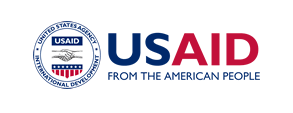The Health Policy Project ended in 2016. Work continued under Health Policy Plus (HP+) until 2022.
Software and Models

Health Policy Project
Resources
Search Publications

Family-friendly policies provide benefits such as on-site health services, childcare, family planning, maternity leave, transportation, and flexible scheduling. These benefits help employees manage their careers and family responsibilities more successfully. Such benefits can lower employees’ stress levels, improve individual and family health, and increase job satisfaction. Family-friendly workplace benefits can even help reduce poverty by making it possible for more people—especially women—to remain in the workforce.
Employers also benefit from family-friendly policies by helping them to retain highly-skilled employees who might seek other jobs or leave the workforce entirely. Retaining workers, particularly in specialized industries, reduces companies’ training and recruitment costs. Implementing family-friendly policies can also decrease absenteeism, enhance productivity, and improve employers’ ability to attract competitive applicants. However, many employers are still unaware of the potential gains associated with creating a more family-friendly workplace.
The USAID | Health Policy Initiative, Task Order 1, designed the Family-Friendly Workplace (FFW) Model as a tool for engaging stakeholders to build support for family-friendly workplace policies. The PC-based computer model enables businesses to analyze the costs and advantages of providing family-friendly benefits and, through the analysis process, to better understand and address the needs of their employees.
The model offers a selection of standard benefits and also allows the user to define additional benefits. The standard benefits include
- Family planning
- Infant care
- Maternal health
- After-school childcare
- Maternity leave
- Teleworking
- Flexible scheduling
- Infant health
- Counseling
The model’s format enables the user to explore multiple scenarios by selecting the desired benefits and entering data on their cost; workforce composition; employees’ family status; and the current benefits package. The model then projects the comparative savings of implementing the selected program. The FFW Model output screens, which can be viewed either numerically or in chart form, display results of the projection, such as:
- Expenditures necessary to implement the program;
- Days of leave averted;
- Turnover averted;
- Baseline and projected absenteeism rates; and
- Overall cost-benefit ratio of the benefits program.
The Health Policy Initiative pilot-tested the FFW Model to promote family-friendly workplaces in India. To learn more, click here.
Some of the files in this software package were developed by our predecessor projects, the POLICY Project and the USAID|Health Policy Project, and the links will open files from those project websites.
- Family-Friendly Workplace Model (EXE 2,006.1 kb 10/20/2010)
- Family-friendly Workplace: A Model for Estimating the Cost Savings of Implementing Family-friendly Policies (manual) (PDF 471.9 kb 6/10/2009)

